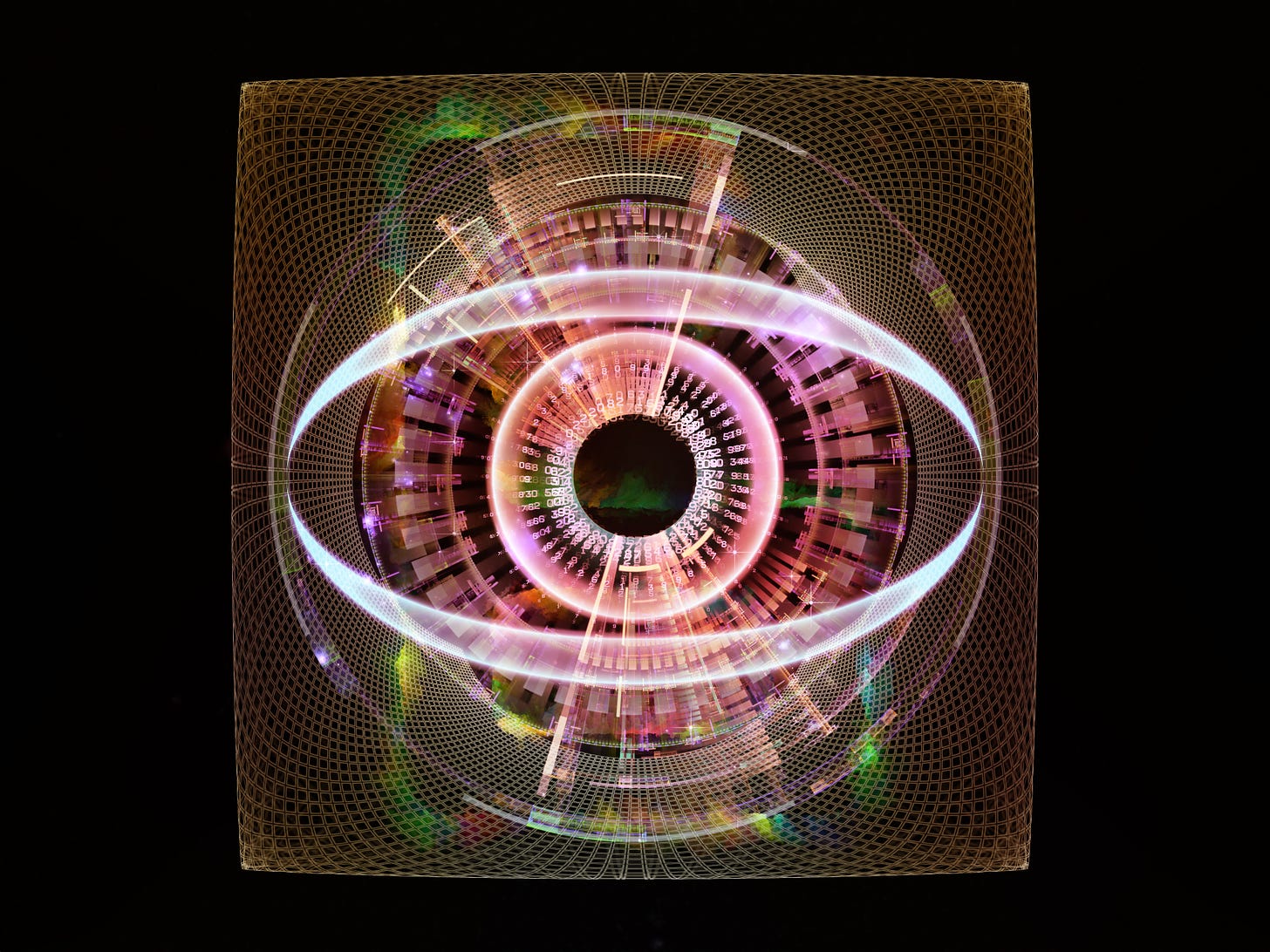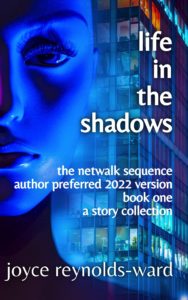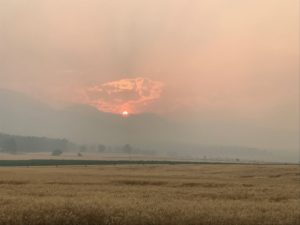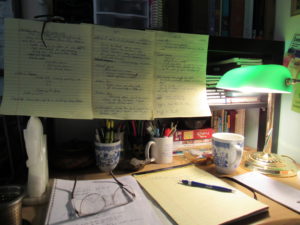
I used to be a special education teacher with a fascination for neurobiology and how the brain works. While I was a generalist, I had been exposed to a couple of cases where vision issues needed to be taken into consideration. Such cases called for a specialist associated with a neighboring county’s Education Service District. Vision Impairment specialists are not only rare in education, they’re very much prized (and there are times when I regret that I didn’t go into that subfield). That said, I seriously only had two confirmed cases of Vision Impairment in ten years of working in the field.
However, the class session for my special ed training cohort that covered Vision Impairment was utterly fascinating. Little did I know that the experience of that one session—including wearing goggles that simulated different types of vision impairment—would ultimately prove to be personally valuable.
It started sometime around April, 2022. I had been noticing that I was having greater problems than usual with sun glare on my desktop—which is situated so that reflections shouldn’t be an issue.
At first I didn’t think anything much about the situation.
For the last fifteen years or so, I have had issues with focus during certain times of spring and fall. A conversation with my optometrist at the time centered on the aging of my eye muscles, and slower focusing as a result. I had also noticed that sometimes during that period of sun angle, my eyes were unhappy and needed some additional time to focus.
I didn’t get excited.
I figured that this was just a worse case of my seasonal focus issues than usual, possibly an effect of dry eyes and spending a lot of time at the desktop instead of the laptop, which was failing (tends to happen, especially when you’ve drafted something like seven books or so of about 100,000 words each on the device, in the course of two and a half years. That tends to make laptops Very Tired. I had worn spots on keys and the space bar).
So I spent money on a mouse for my iPad and switched over.
I had bought said iPad a couple of years earlier because my eyes hurt when reading on my phone.
I figured this would make everything better, and that part of the problem was my laptop.
It wasn’t.
The blurring became more specific in location. Inside portion of my right eye. When I drank from a coffee cup, everything around the rim was as clear as it had been.
It became harder to see the temperature and time readout in the Subaru, located on my right side.
Bright sunlight hurt my eyes more. And, as several weeks passed, things were getting worse, not better.
I looked up macular degeneration. Nope, didn’t fit. Same for retinal detachment, which had been a worry since I had a sign of some old damage there.
I looked up glaucoma. Maybe, especially since my eye pressure readings were borderline at my last exam. Possible.
I didn’t think much about cataracts, simply because the changes were happening quickly. We had a friend who had needed surgery for glaucoma, so I was worrying about that, and knew I needed to act quickly.
I made an appointment with my optometrist.
The first big sign of trouble was when it took a lot of effort on my part and the assistant’s part to get good scans of that right eye. Left eye? No problem. Right eye? Trying to center in on those bright red dots proved to be more difficult than expected.
“It’s a fast-developing cataract, and you need surgery,” was the optometrist’s verdict. “Your glaucoma numbers are also pretty high, so you need to have that checked as well.”
Which was a complication. I do not have vision coverage, so I don’t go to the optometrists at Kaiser (my medical coverage). Multiple reasons for this choice, including dealing with opticians in the Kaiser shops who don’t understand people who do things like ride horses. The arguments that I’ve had about bifocal line placement, as well as finding frames where coatings don’t peel off the lenses, much less finding frames that will hold up to a horseperson’s lifestyle…yeah.
Nonetheless, I sent a message to my doctor at Kaiser requesting a referral, and citing the glaucoma numbers as a primary reason (they were up there).
The stately dance of managing my cataract had started.
“We’re looking at mid-fall for a surgery date,” the ophthamologist said when I finally got in to see him. “Sorry, but we’re backed up.”
He also dismissed the glaucoma as an issue. “Not concerned about those numbers. Let’s deal with this cataract first. My scheduler will contact you.”
So I went home and prepared to live with a cataract.
Coping with vision impairment, especially a fast-developing one, takes up a lot of cognitive effort.
At first it wasn’t too bad. I didn’t open the curtains in my office. I implemented some dry eye management systems such as running a diffuser with plain water to improve the humidity in my office. I took more frequent breaks.
After all, as a former special educator, I knew coping strategies were possible.
The blurriness got worse.
I found myself taking longer to get my daily words down. Lying down once or twice a day with a cold pack on my eyes ended up being necessary. It became harder to plow through any reading on a computer screen, and paper wasn’t any better.
But what was worse was the beginnings of cognitive fog.
It affected my reading comprehension. I had to read things more slowly and carefully. For a fast reader like I have been all of my life, needing to slow down was a frustrating exercise. Retention became a challenge. Tasks that had been simple became slow slogs.
The issues weren’t just tied to computers and reading. My close-up depth perception worsened. I stopped working on a couple of quilts because I didn’t trust myself to measure, cut, and sew accurately. Walking down stairs or an uneven slope became a challenge.
I worked out strategies, but the price for trying to cope and compensate was greater fatigue. I started postponing my applications for book promotions because the cognitive labor of facing the questions or even the applications themselves was tiring. Too much effort. I managed to get two books finished and released, but a third is still awaiting edits.
Schedules started falling apart in September. I could see how I was losing track of things, slowing down in writing production, spending more time lying down with a mask over my eyes, just to relieve the aches.
But I didn’t beat myself up over it. I was dealing with a vision impairment, yes, but one that hopefully could be fixed. I remembered that class session so many years ago, with the goggles. What was happening with my vision was simply a result of the cataract.
I kept telling myself that frequently, and planned for the possibility that things could get worse.
When things happened, they happened quickly. I qualified for Medicare and had a start date. A surgery date popped up, after I went on Medicare. I would have taken the offered date no matter what, because my vision was worsening week-by-week, but the Medicare piece made it simpler.
I went in for the pre-surgery scan. The technician called in a second person to verify the drastic differences between my eyes. My left eye was still good, but my right eye?
I couldn’t read the top line on a vision chart. Just too blurry.
And yet, every time I raised a coffee cup to take a drink, it blocked out the cataract. I had a temporary reprieve from vision impairment.
But there’s no good way to replicate that blocking. I tried.
“It’s a relatively uncomplicated cataract,” the opthamologist said.
I clung to that lifeline, because the speed of the cataract developing was worrisome.
I am one of those squicky people when it comes to my eyes. I don’t do contacts because I don’t like fussing with my eyes. Heck, I never did eyeliner because that was too much fussing around my eyes. So facing the prospect of cataract surgery, especially after watching the detailed video about it, required a bit of fortification.
It helped to have a number of friends who had already undergone cataract surgery.
“It’s nothing. You’ll be so happy afterward,” was what I kept hearing.
I clung to that reality.
The surgery itself was pretty uneventful. I was part of a production line involving several different types of eye surgery, all performed by my opthamologist. I noticed that there was space for thirty-eight beds in the Eye Procedures department, and I’m pretty darn sure they were all occupied by patients in different stages of preparation for surgery.
Soon enough, it was my turn to go in. I was nervous about the whole thing, especially because of my eye squickyness. I happily accepted the offer of a calming agent, especially since I was very explicit that I was nervous about the whole affair.
I saw bright colors while the surgeon worked.
And then it was done, and the blur was gone.
I’m taking my time to recover right now, listening to my body. It took a couple of days to get past the anethesia. My opthamologist wasn’t very restrictive—when I told him I had an old horse I needed to exercise to keep in shape, he advised me to give it three to five days, and not throw around any hundred-pound hay bales for a while.
I notice that my eye muscles are still adapting to this change—I had subconsciously developed some adaptive mechanisms where the left eye was compensating for the right eye. My eyes are still tending toward fatigue, but improving.
But I didn’t have any major focus issues. To date, the recovery has been uneventful.
I’m grateful for that.




